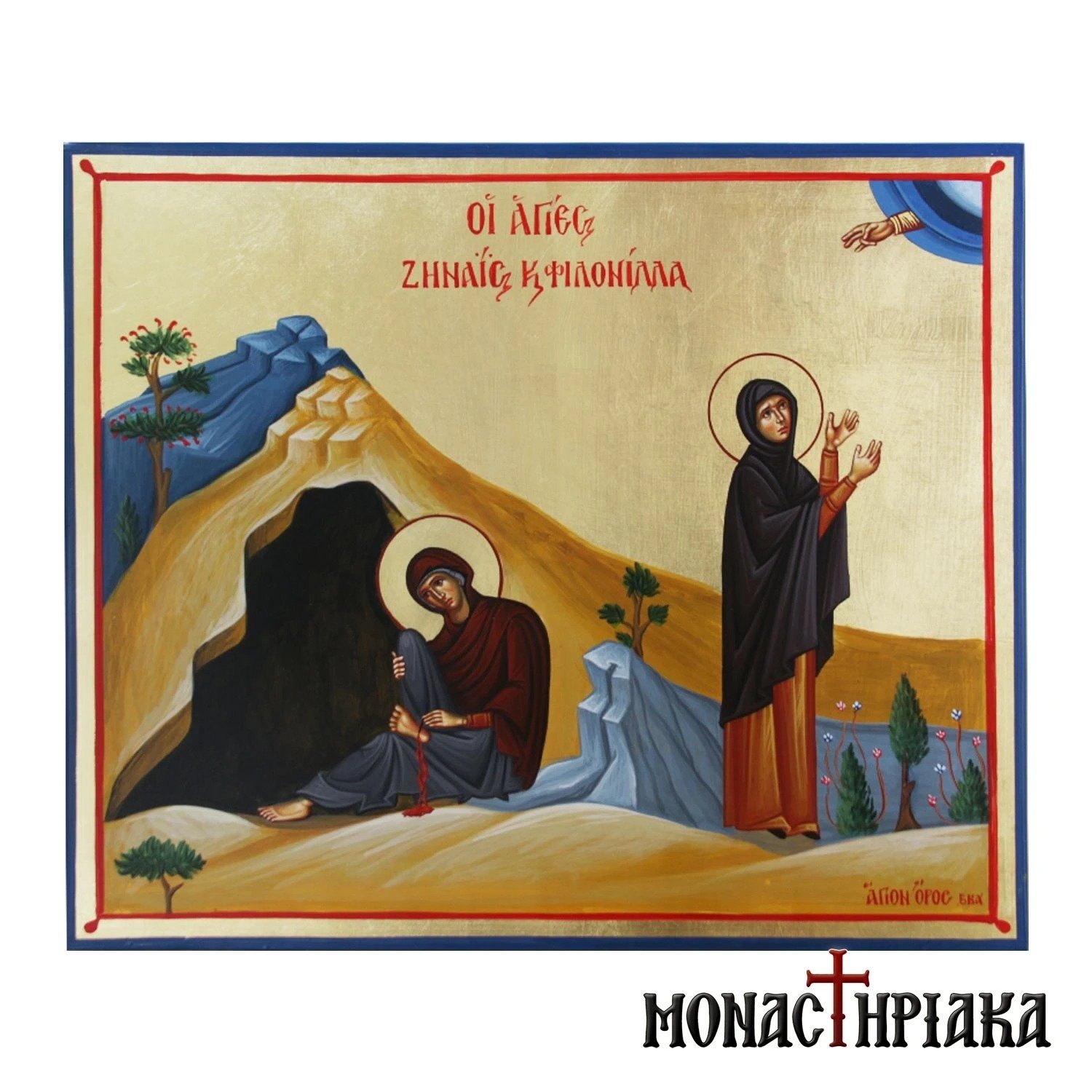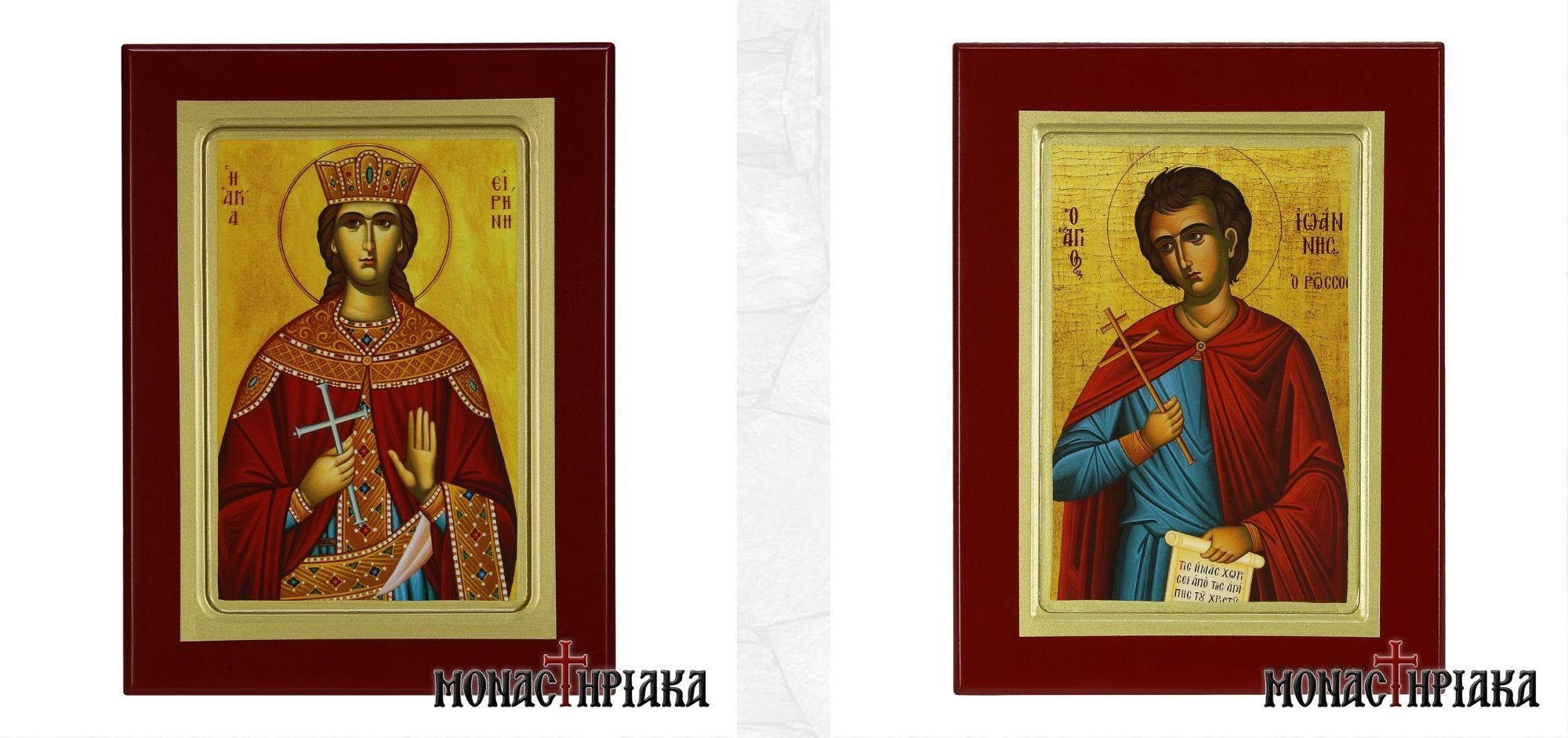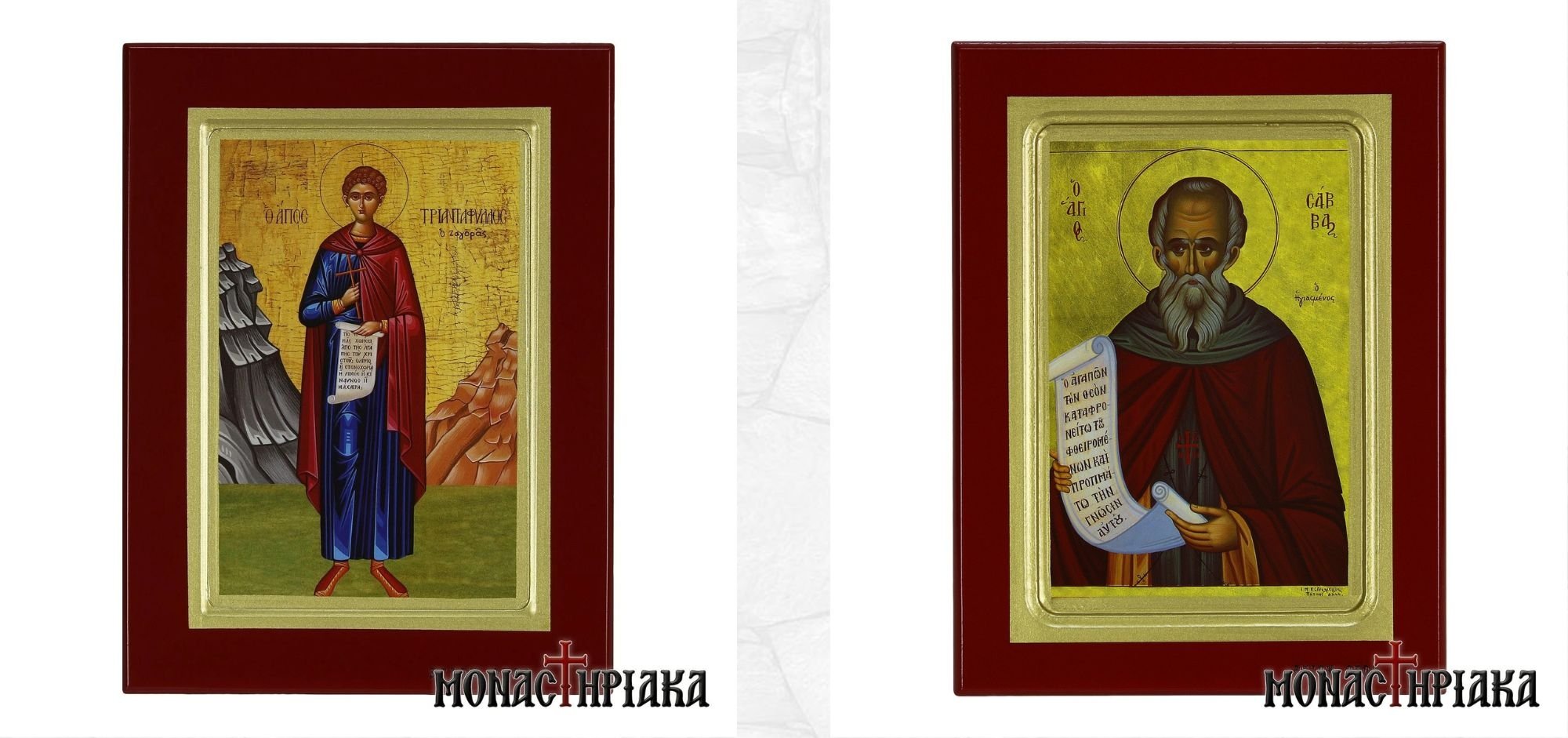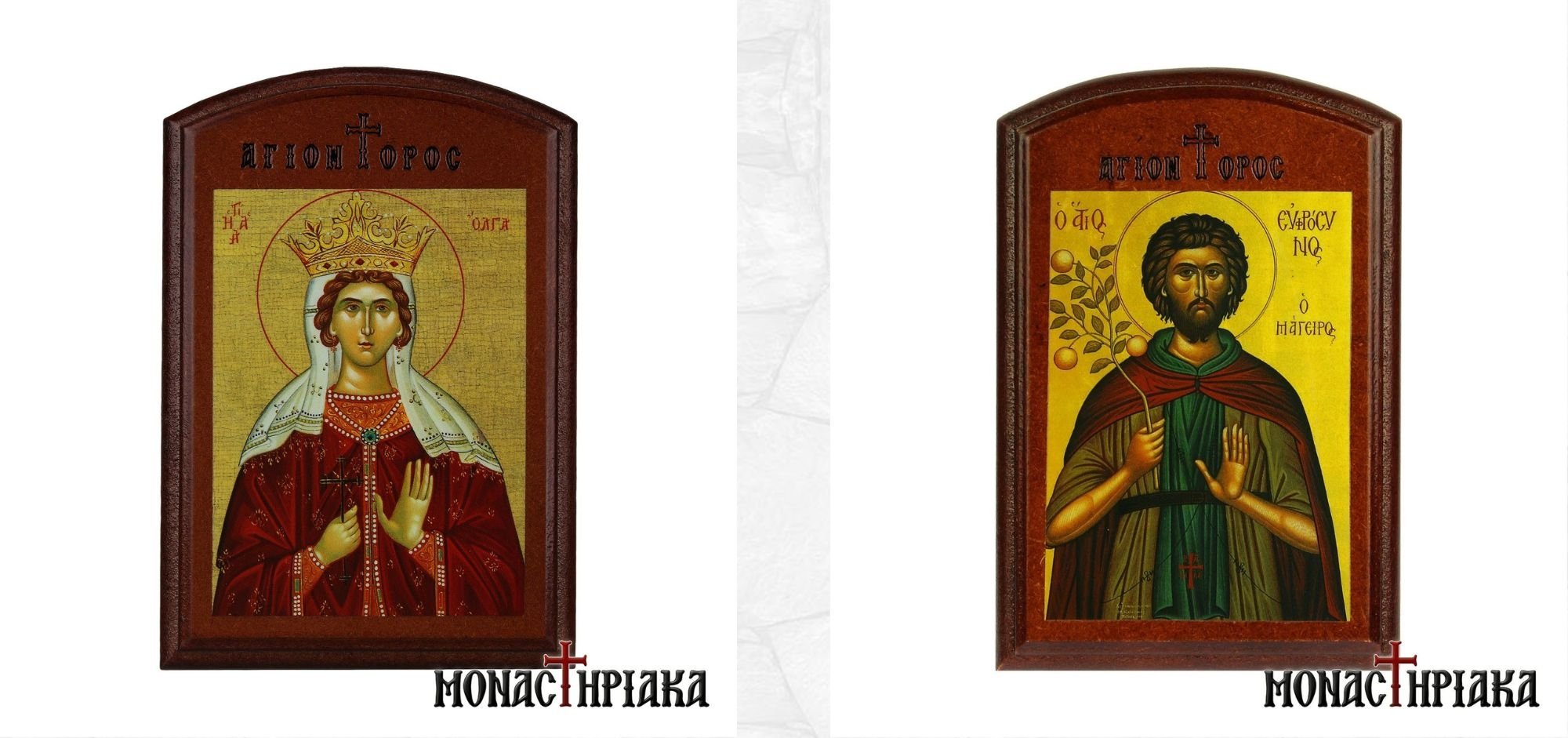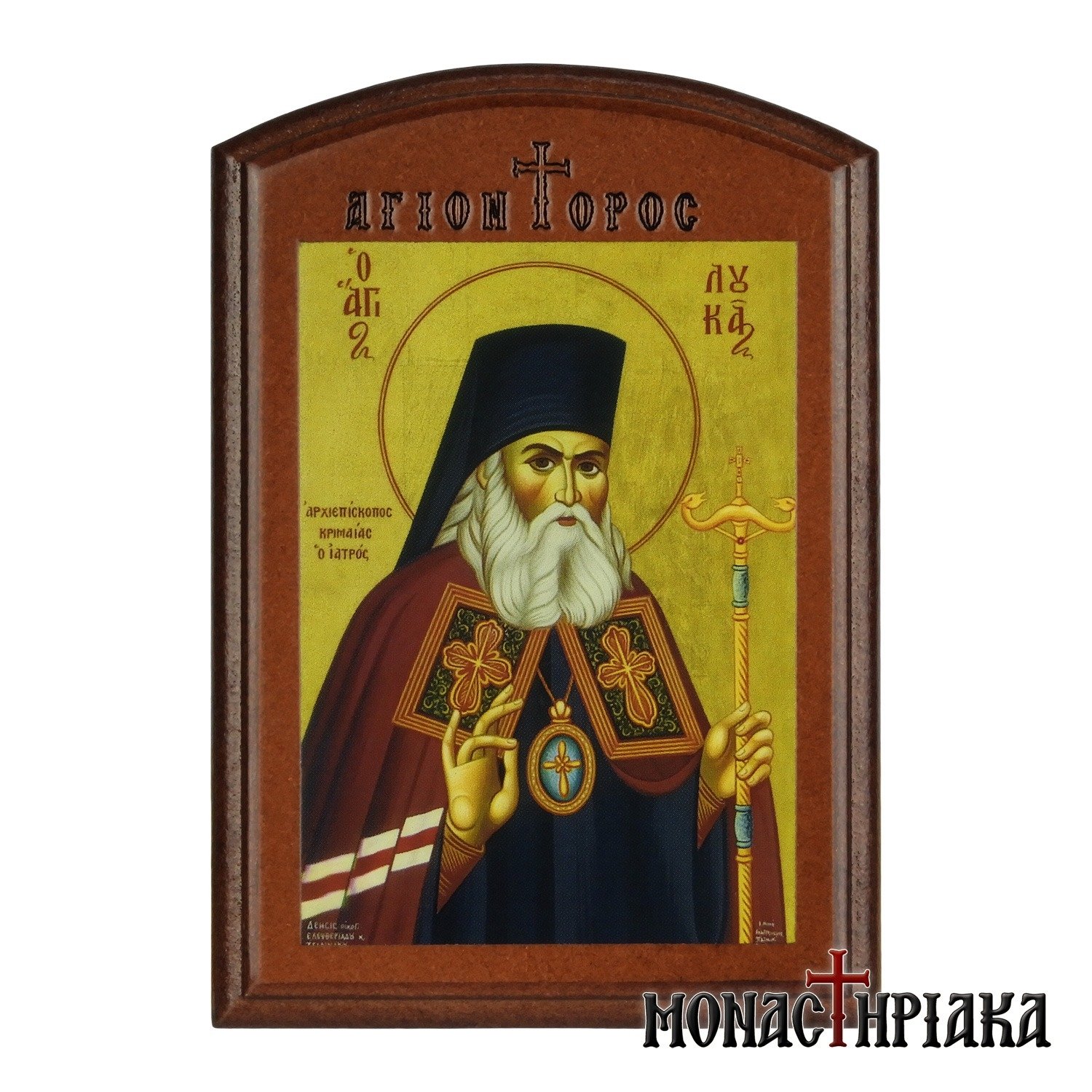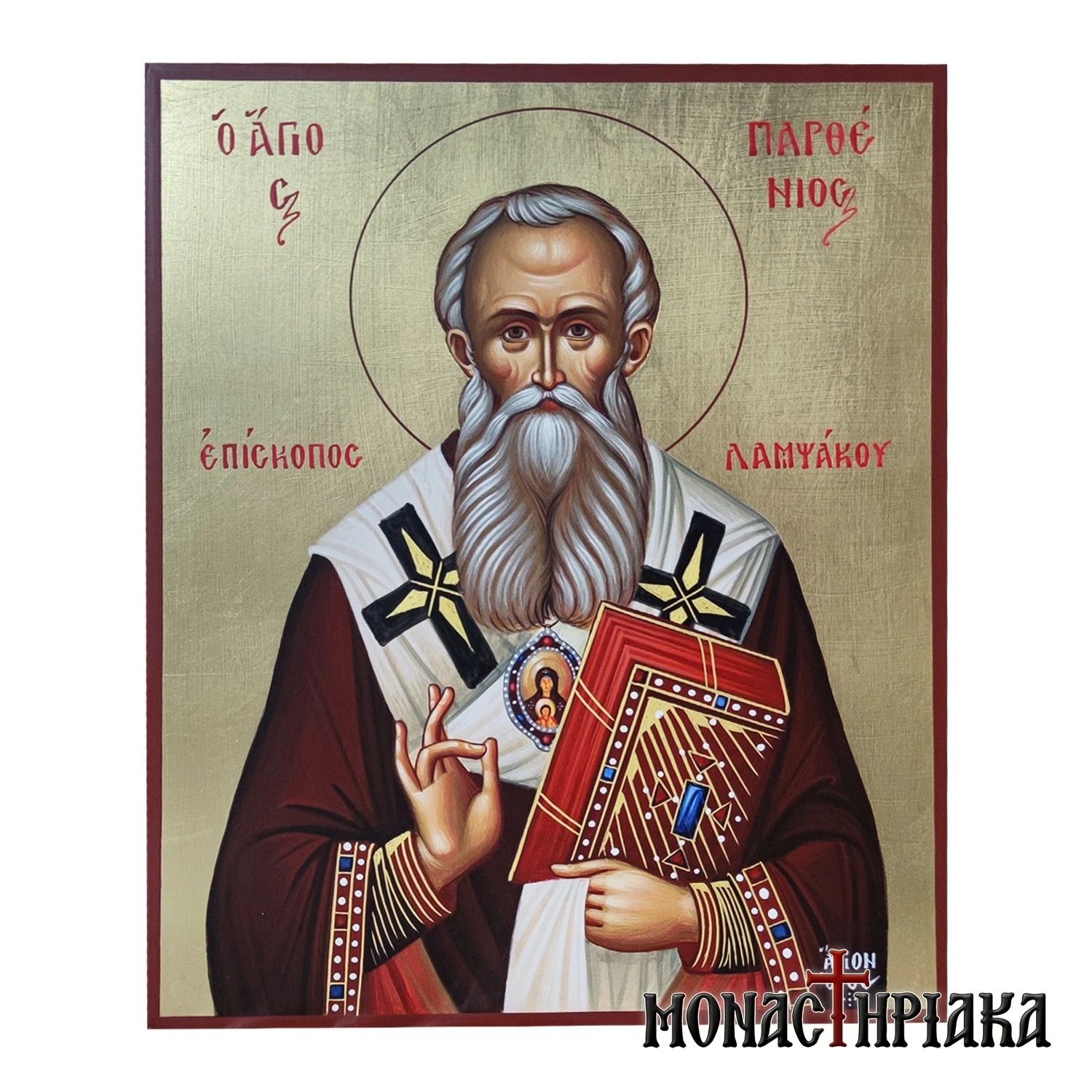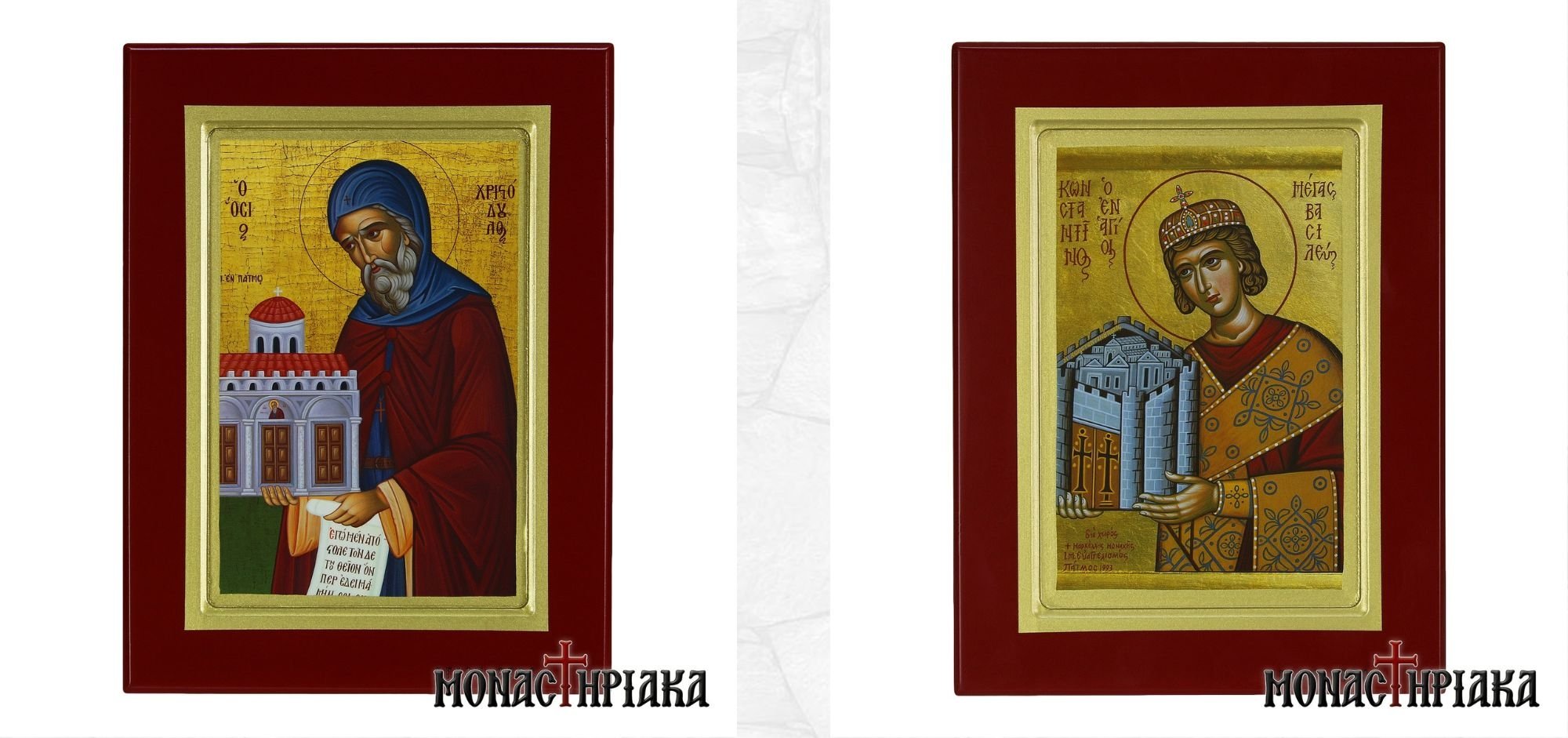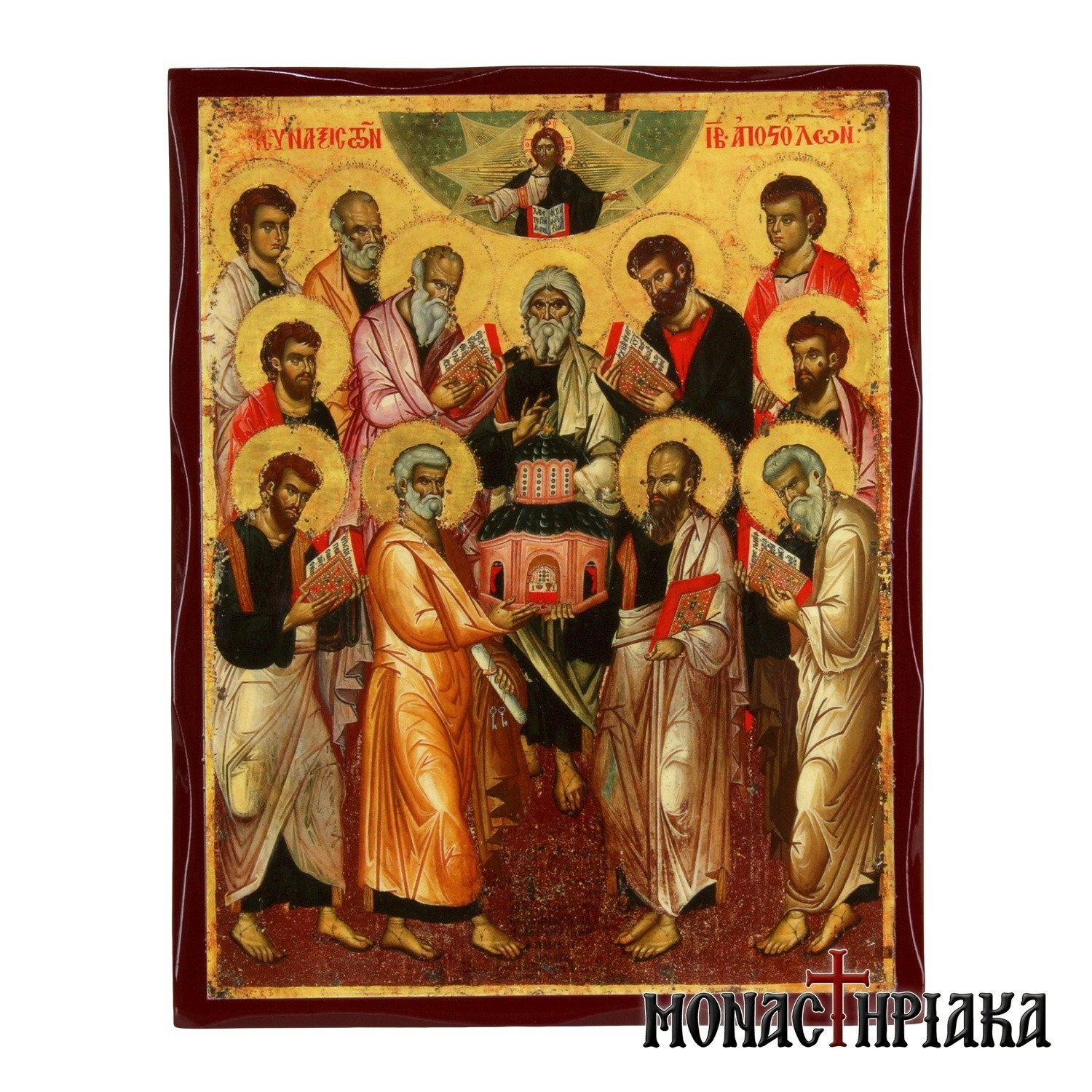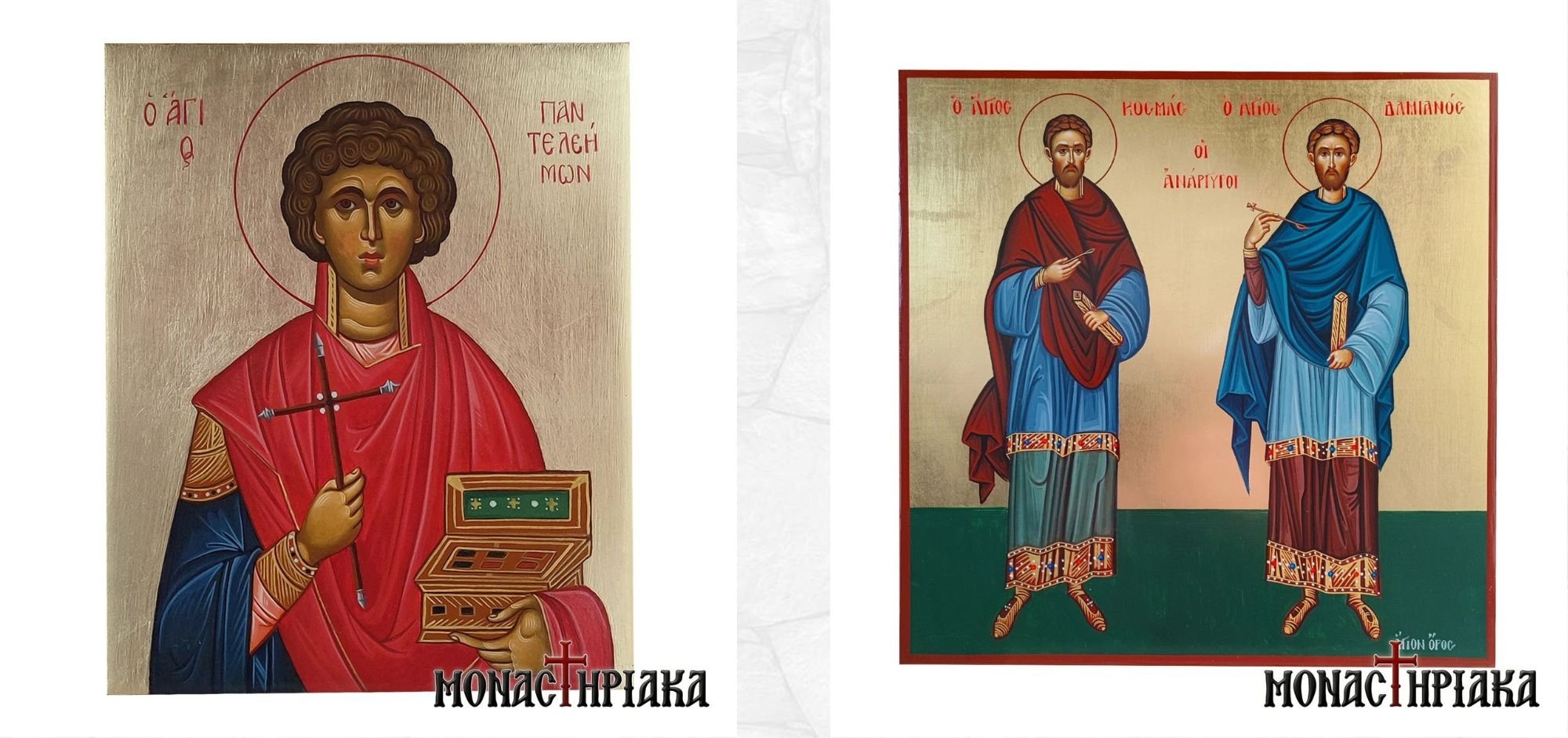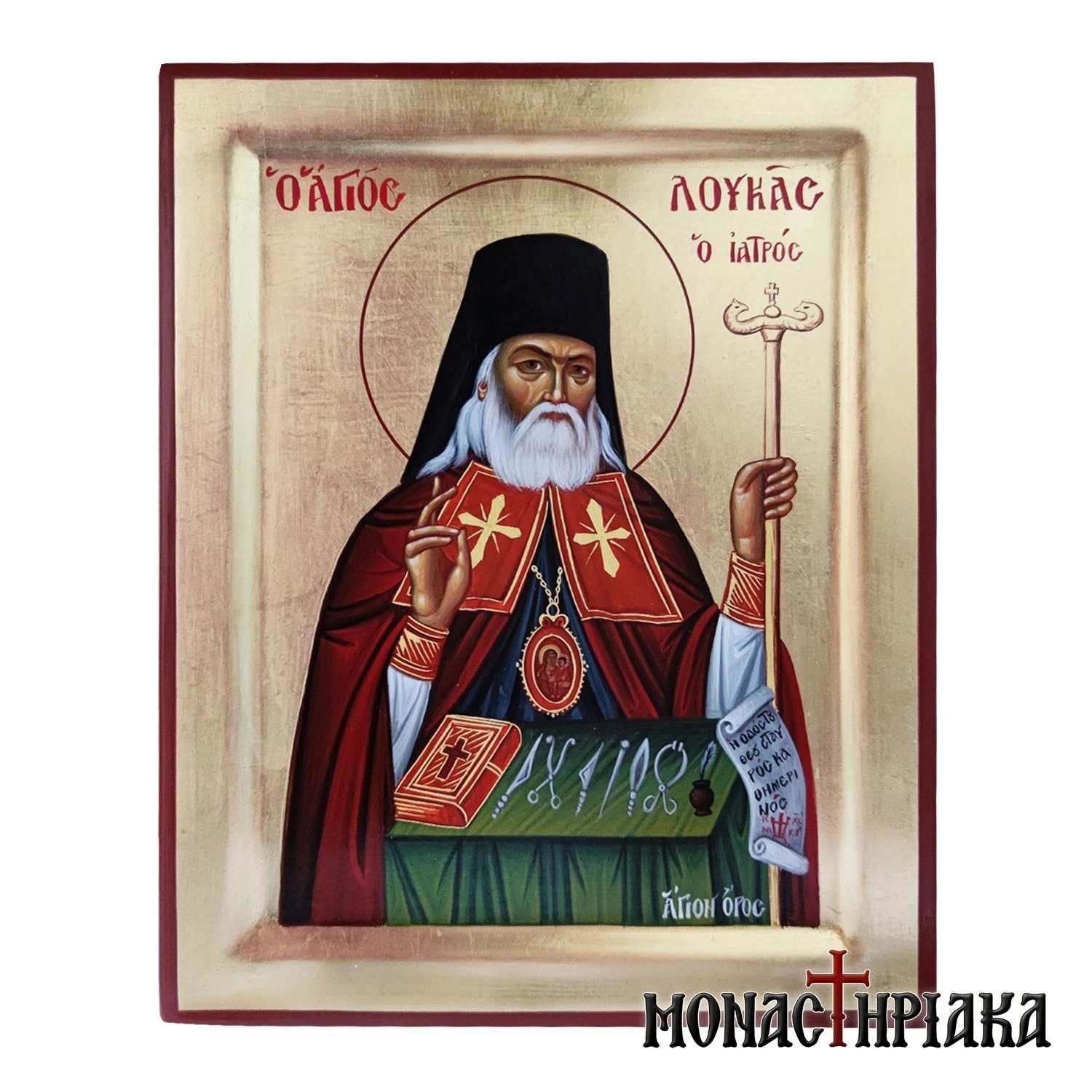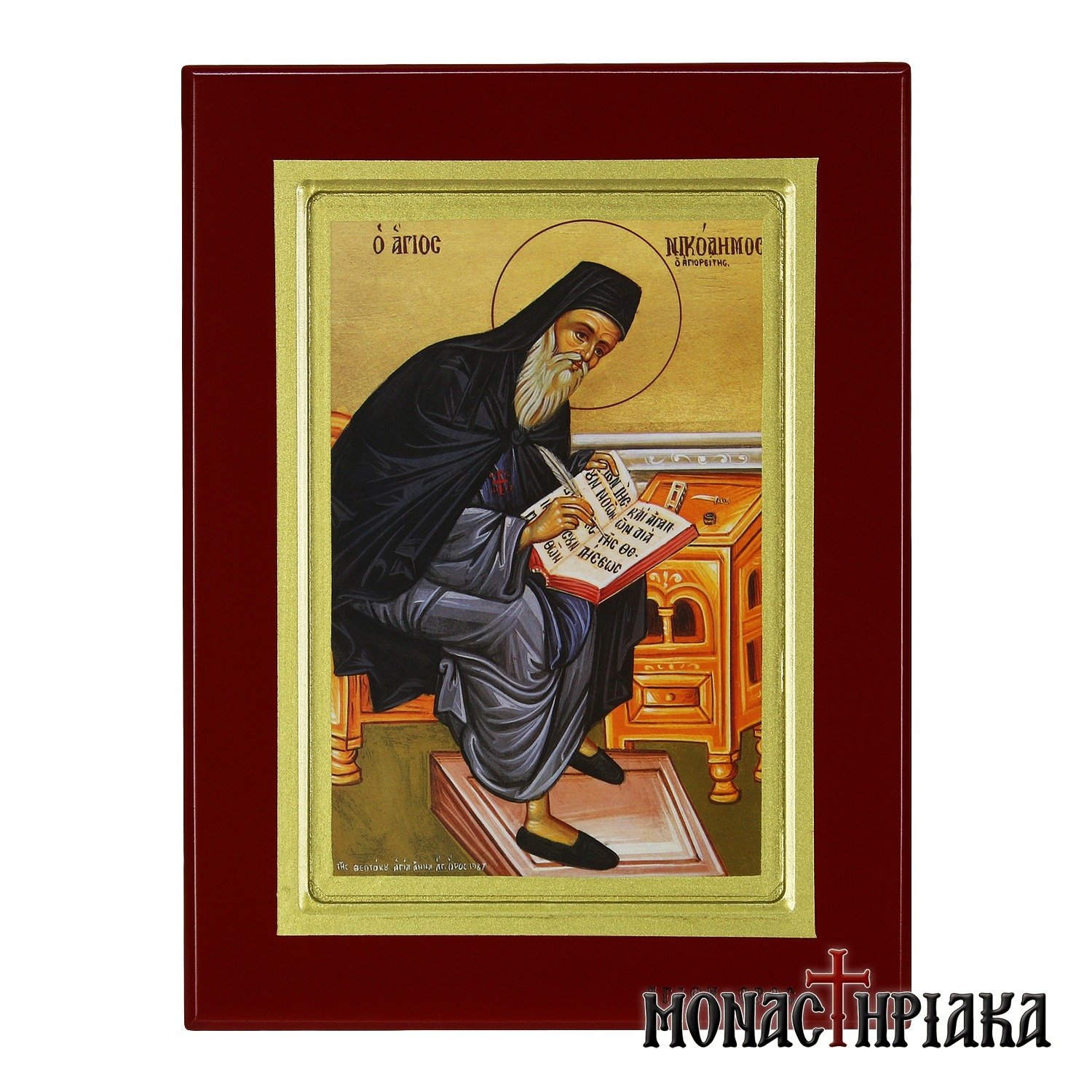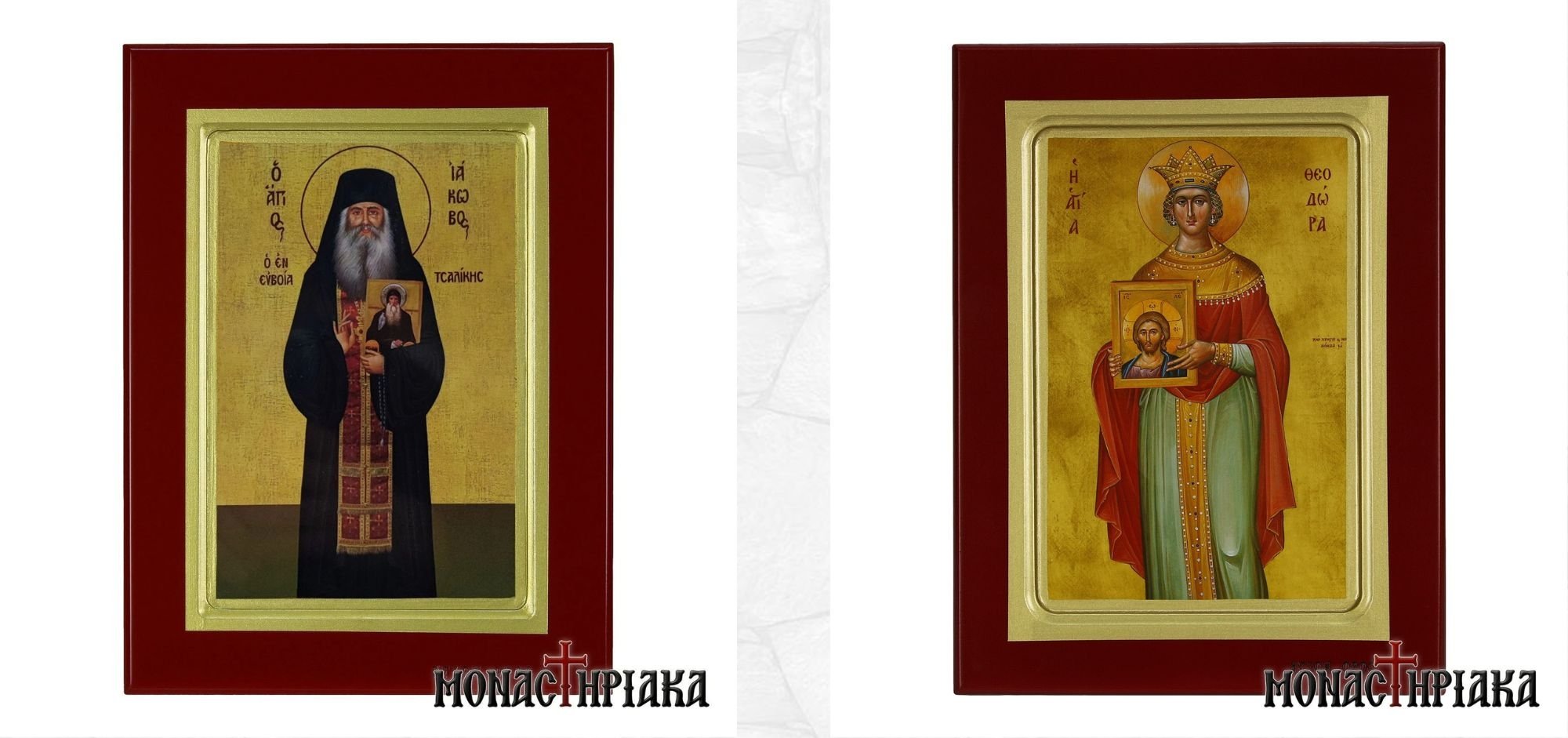What do the objects held by the Saints in Byzantine Iconography symbolize
Orthodox icons as a way of communication with the Christian Faith
Orthodox hagiography reveals to Christians the unearthly, which transcends the boundaries of our physical world. It functions as a way of communication and seeks to highlight the new world that will come with the Kingdom of God. This can be expressed through the icons of the Saints, where characteristics such as schematization, simplicity and differentiation prevail.
In this article you will read about the symbolism of various objects in Byzantine Iconography, such as the cross and the Church held by the Saints, the open palms, the Gospel, the scrolls, the rod, medical objects, as well as the choices of colors.
The basic characteristics of Byzantine iconography
Schematization aims to change the material shapes and colors so that they exude spirituality, lose their ephemeral character and acquire an eternal hypostasis (existence).
At the same time, the simplicity that prevails in the icons is intended to convey the message of Orthodoxy of restraint and starkness, while focusing on the core of the theme and message of the icon.
Finally, the differentiation presents the icon in an altered form, while retaining the key features, in order to highlight the message of rebirth in light and Divine Glory.
In some cases, the icons depict the Saints holding objects with a special symbolism. These objects, in combination with the other elements of the icon, help to identify the Saints and assist in the narration of their lives.
Here you can order handmade iconography from Mount Athos.
What the colors of the icons symbolize
The colors of the icons are often described as unnatural. For example, oftentimes we see horses depicted in red color or rocks in blue or purple, which is a deviation from reality.
As we can conclude, color is not a decorative element but gives a deeper meaning to the icons and spiritual dimensions in the eyes of the viewer.
In particular, white color symbolizes light and purity and black symbolizes mystery. Blue shows vividness and clarity, while red reveals the flame and warmth of mystery. Furthermore, yellow refers to Divine Glory and splendor and green to hope. Finally, the beams of divine light are symbolized with blue color.
What the Cross held by the Saints symbolizes
The Cross that the Saints hold in the icons symbolizes their martyrdom. It is not the manner of their sacrifice that matters, but their confession of faith in Jesus Christ. In some cases the icons depict the Saints holding the instruments that they were martyred with. In other cases the icons represent how the Saints were martyred.
What the weapons and armour of the Saints symbolize in the icons
In Byzantine iconography we often find weapons such as spears, shields and swords. These objects usually belong to martyrs who were soldiers and manifested their faith in Christianity.
These martyrs are examples of dedicated people who have left behind their military duties to follow Christ. Thus, the arms and armor highlight this transition, reflecting their adherence (allegiance) to religion.
What the scroll held by the Saints symbolizes
The scroll represents the sacred wisdom of the Saints. It often appears in the hands of ascetics, writers, prophets and apostles, who were distinguished for their insight, prophecy and the transmission of divine knowledge to their fellow men. It appears that on the scroll there are recorded bywords (sayings) that were drawn from Saints’ teachings.
What the open palm symbolizes
The interpretation of the open palm varies depending on the icon that is depicted. In the case of the Saints, who were martyred for the Christian faith, the open hands symbolize their resistance to idolatry. In contrast, in the depiction of Virgin Mary and Saint John the Baptist, the open palm shows the posture of supplication (deesis - prayer).
What the staff (rod) symbolizes
The rod symbolizes the Bishop's role as shepherd and guide of the faithful towards Jesus Christ. The design of the rod varies according to how it was used in the Saint's life.
The episcopal rod may be topped by a cross mounted on a double handle, which is usually snake-shaped to symbolize the serpent lifted up by Moses in the desert.
The rod may vary in appearance depending on the actual design used in the life of the saint.
The T-shaped rod symbolizes the power held by the abbots of the monasteries or the role of the Saints, who were the guides and protectors of the people during their lifetime.
However, this staff is also depicted on the hands of Saints who did not hold any office during their lives such as St. Xenia.
Saint Xenia was homeless in Petersburg and spread the teaching through which she urged abstinence from carnal acts. In this case the T-shaped staff (rod) takes on a different meaning and symbolizes the earthly life of the Saint, giving a heavenly role in the life of the Church.
What the Gospel held by the Saints symbolizes
In Byzantine iconography, some Saints hold the Gospel, which symbolizes the psalms and teachings they were conveying to Christians during the Divine Liturgy. The Saints hold the Gospel with special respect and reverence, while their bare hands are covered with their sacred vestments and epitrachelions (stole), as the icons show.
Furthermore, there are icons in which the Evangelists hold the Gospel open, on which are written the words they wrote and transmitted with their preaching to the faithful.
What the churches or monasteries that the Saints hold symbolize
There are two main reasons why Saints keep churches or monasteries in Byzantine iconography.
On the one hand, it is because they were martyred for their faith. In fact, in many icons Saints are shown offering the temple to the Lord Jesus Christ.
On the other hand, it is because many Saints were founders, benefactors or patrons of the Church in their own places and are honored for their contribution.
What the church held by the Apostles Peter and Paul symbolizes
The Apostles Peter and Paul, who celebrate together on June 29, are shown in an icon holding a church in their hands, symbolizing the hymnography of the Church.
They emerge as pillars and ‘church builders’, having founded many church communities in the Mediterranean regions and the Holy Lands.
Here you can find icons with Saint Peter and Paul.
What the golden background of the icons symbolizes
With the golden background on the holy icons, the three dimensions of space are removed, creating a spiritual environment. The bodies of the Saints have a light appearance, indicating a spiritual dimension.
What the medical instruments held by the Saints symbolize
The medicine box and medical tools reveal that the Saint in the icon belongs to the Holy Unmercenaries. Essentially, the Saints depicted with medical objects, treated the sick uncharitably, offered healing from serious illnesses and generally treated those in need, without asking for monetary compensation.
What does the writing stylus symbolize in the icons of the Saints
The writing quill indicates that the pictured Saint holding, was a writer or hymn writer during his life.
What the icon held by the Saint symbolizes
In many icons, the Saint is depicted holding an icon of a Saint with one hand. In particular, these depictions show either the defenders of icons or the spiritual father of the saint. This symbolizes the connection they had with each other.
It is possible that there are many other items that have not been mentioned in this article. As can be seen, there are many reasons why the Saints are depicted holding their objects in the icons, but each reason individually is connected to our Lord Jesus Christ.
Through our website you cano order the Byzantine Iconography you wish, by easily completing the Form for Custom Hand Painted Icons from Mount Athos. You can choose the theme of the hagiography, the type of the icon, the dimensions, the background, as well as the appearance of the wood. You can even upload your own photo based on which the handmade icon will be created. For any clarification you can send us an email at the email address info@monastiriaka.gr.
